Jump to Section
Exploring South Korea reveals a blend of ancient traditions and modern marvels, offering diverse cultural experiences. Seoul’s museums showcase artifacts spanning thousands of years, enhanced by VR technology for vivid storytelling. Visiting during national holidays like Chuseok provides unique exhibits that celebrate Korean heritage.
The Demilitarized Zone (DMZ), with its historical significance and panoramic views from the Dora Observatory, offers an unforgettable tour into the tensions between North and South Korea. This guide will navigate you through these must-see destinations to enrich your journey in South Korea.
City Guides Overview
Here’s a concise breakdown of the key highlights of various cities in South Korea:
| City/Region | Attractions | Cuisine | Cultural Highlights | Must-Do Activities |
|---|---|---|---|---|
| Seoul | Gyeongbokgung Palace, Jogyesa Temple, Bukchon Hanok Village | Tteokbokki, Bindaetteok, Hotteok, Gimbap | Traditional Korean culture, Buddhist heritage, historic architecture | Rent a hanbok, visit palaces, explore traditional villages, enjoy street food |
| Busan | Haeundae Beach, Gwangalli Beach, Gamcheon Culture Village | Odeng (fish cake skewers), donuts, fresh seafood | Coastal beauty, vibrant art scenes, maritime history | Relax on beaches, watch drone shows, explore Gamcheon Village |
| Jeju Island | Hallasan Mountain, Seongsan Ilchulbong Peak, Cheonjeyeon Waterfalls | Jeju black pork, fresh seafood, local tangerines | Natural wonders, volcanic landscapes, UNESCO World Heritage sites | Hike Hallasan, watch sunrise at Seongsan Ilchulbong, visit waterfalls |
| Gangnam (Seoul) | COEX Mall, Garosu-gil, Yongsan Electronics Market | Trendy cafes, international cuisine, street food | Modern shopping, tech hubs, trendy fashion | Shop at COEX, explore Garosu-gil, visit Yongsan Electronics Market |
| DMZ (Near Seoul) | Dora Observatory, Imjingak Park, infiltration tunnels | Local snacks, traditional Korean meals | Historical significance, Korean War history, geopolitical insights | Tour the DMZ, visit observatories, explore war tunnels |
| Temple Stays | Bongeunsa Temple, Haeinsa Temple, Baekdamsa Temple | Balwoogongyang (temple meals), tea ceremonies | Buddhist traditions, meditation, spiritual retreats | Participate in meditation, join chanting services, explore temple grounds |
| Festivals | Chuseok, Boryeong Mud Festival, Seoul Lantern Festival | Songpyeon, jeon, festival street food | Traditional and modern celebrations, cultural immersion | Celebrate Chuseok, join Mud Festival, enjoy lantern displays |
Discover Seoul’s Historical Landmarks
Seoul boasts many historical sites that narrate Korea’s rich history. One must-see is Gyeongbokgung Palace, a grand symbol of the Joseon Dynasty and the largest surviving palace among Seoul’s Five Grand Palaces. Rent a hanbok to enter for free and immerse yourself in traditional Korean culture.

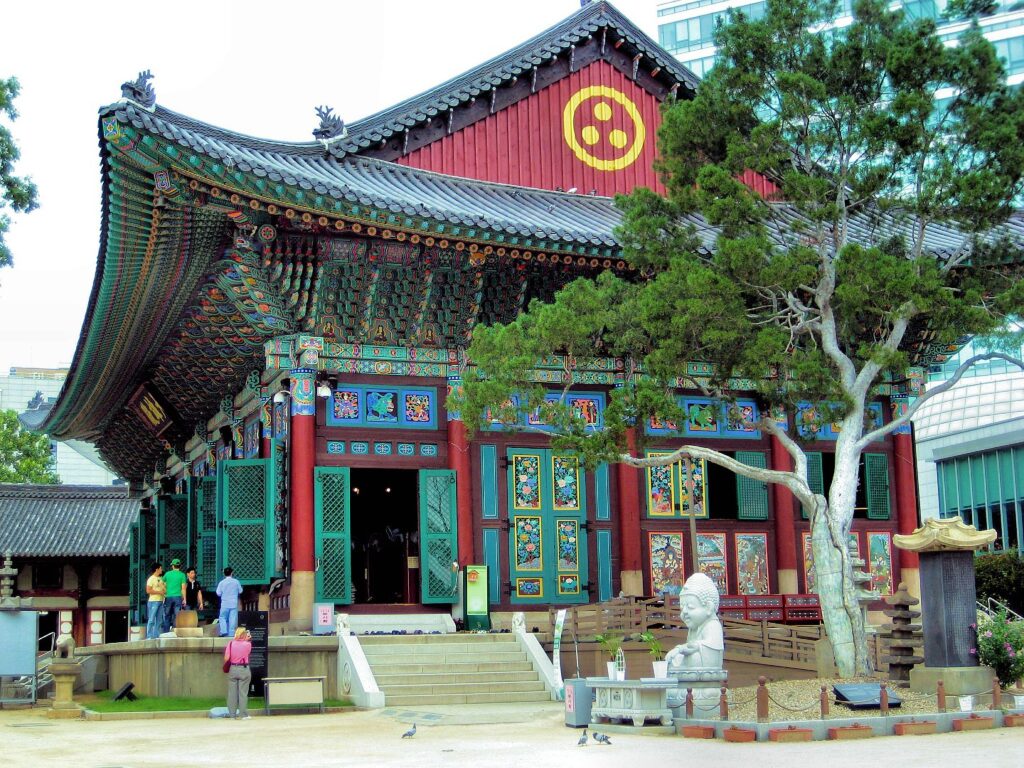
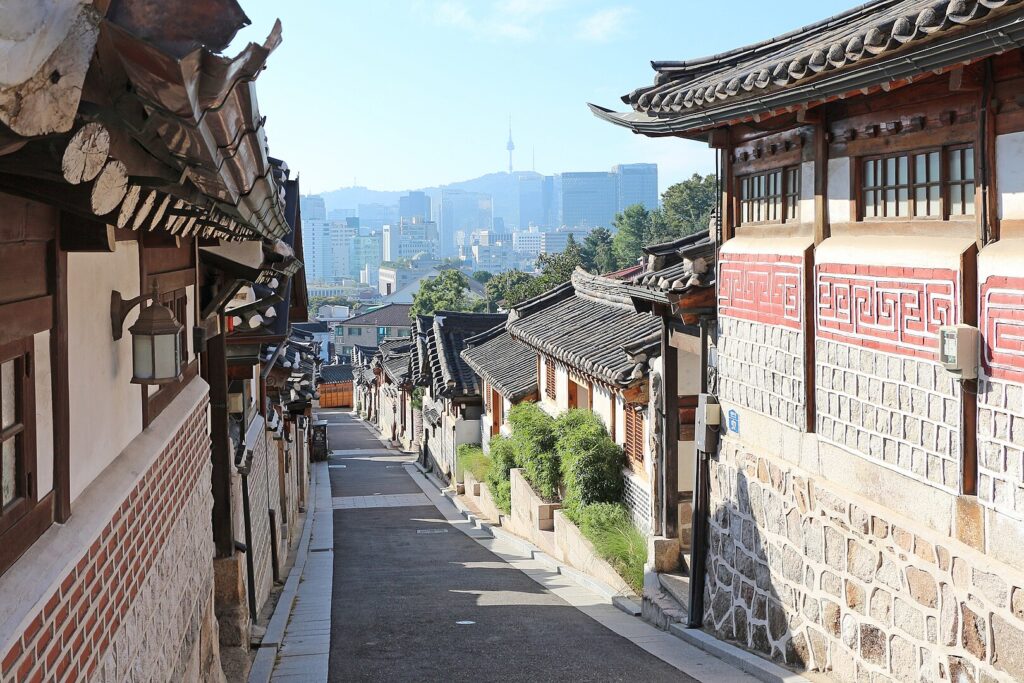
Another significant site is Jogyesa Temple, the heart of Korean Buddhism. At this temple, you might witness annual events like lantern festivals showcasing vibrant traditions. For those who love quaint neighborhoods, Bukchon Hanok Village offers an authentic experience with its well-preserved hanoks—traditional Korean homes now housing restaurants and boutiques.
A more somber yet fascinating place to visit’s Imjingak Park near the DMZ (Demilitarized Zone). This park connects you with pivotal moments from the Korean War. From here, access key sites such as Dora Observatory where views into North Korea are available or walk through tunnels once used in infiltration attempts during wartime.
These landmarks provide invaluable insights into South Korea’s past while enriching your travel experience immensely. Book guided walking tours via platforms like Klook to ensure smooth visits without missing highlights. These tours enhance understanding by providing detailed stories behind each location, making them essential for any comprehensive city guide focused on exploring South Korea thoroughly.
Taste Traditional Korean Street Food
Walking through the vibrant streets of South Korea, I was drawn to the enticing aroma of street food. Tteokbokki caught my eye first. These chewy rice cakes smothered in a sweet and spicy sauce were incredibly addictive.
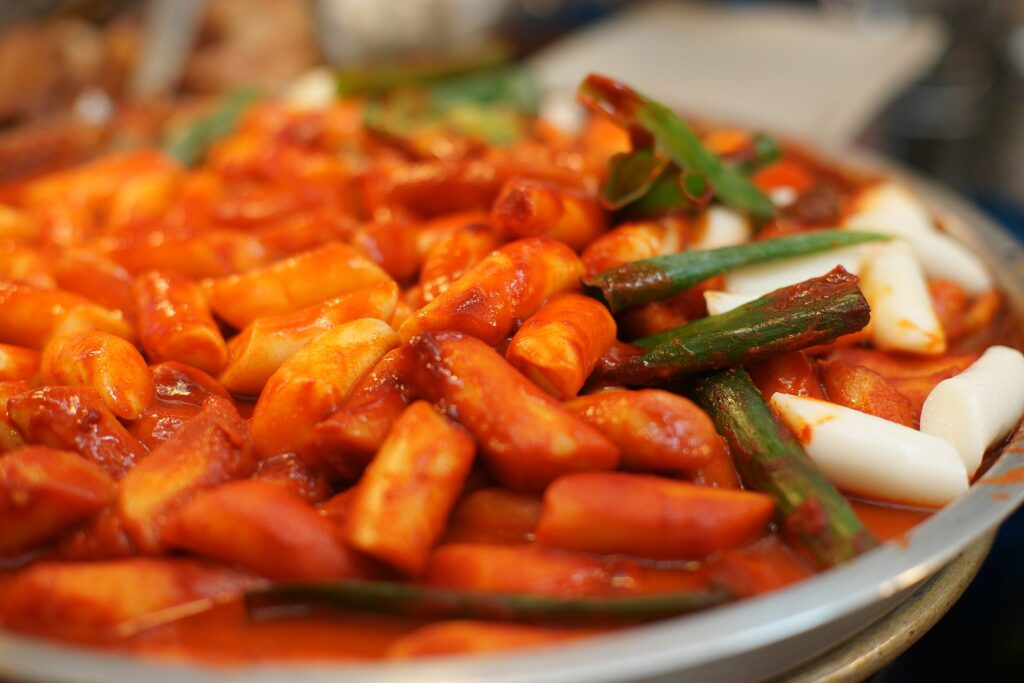

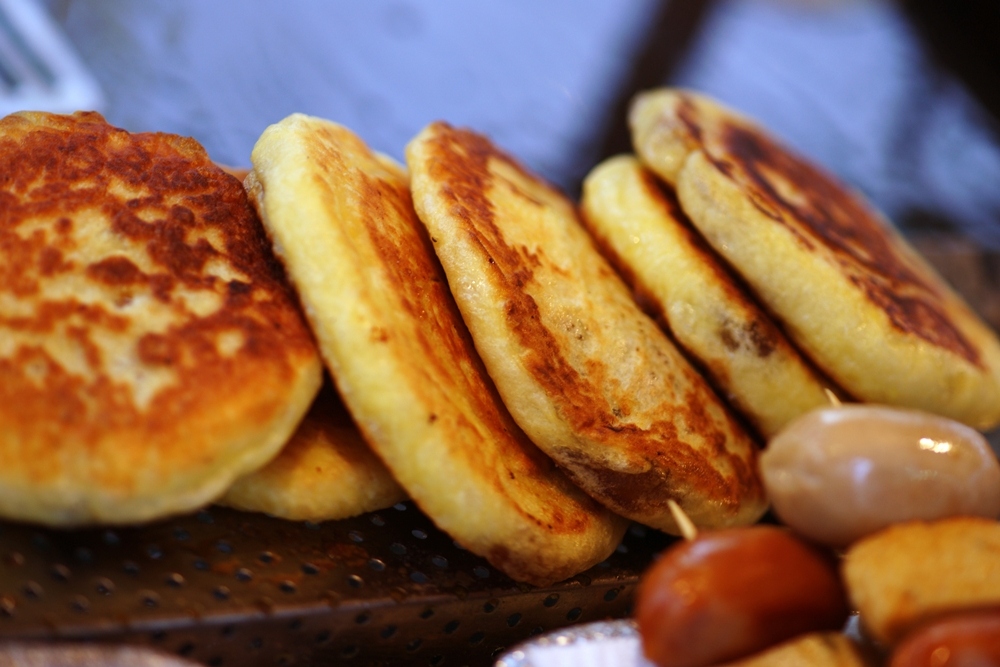
Each bite was an explosion of flavors with fish cakes and boiled eggs balancing out the heat. Another must-try is Bindaetteok, crispy mung bean pancakes mixed with vegetables that offer savory nuttiness in each bite. The sizzling sound as they cooked made my mouth water instantly.
I couldn’t resist Hotteok next – sweet stuffed pancakes filled with brown sugar, honey, and cinnamon often enhanced with nuts for extra crunchiness—a perfect blend for anyone’s sweet tooth cravings! Moving on to Gimbap—often called Korean sushi—I found this seaweed-wrapped delight packed tightly around various fillings like pickled radish or tuna, creating harmonious textures from crisp veggies combined smoothly amidst seasoned rice grains. This delightful dish is deeply enjoyed by locals and generally known to foreign travelers, encapsulating the soul’s depth of Korean cuisine and representing genuine hospitality rooted in cultural heritage.
Busan Beaches and Coastal Delights
Busan’s beaches are some of the best I’ve seen. Haeundae Beach is stunning with its clean sand and clear water. It’s perfect for sunbathing or a dip in the sea.
Close by, you’ll find trendy cafes where you can sip on iced coffee while enjoying ocean views. Gwangalli Beach offers more than just relaxation; it boasts mesmerizing sights like Gwangan Bridge, especially at night when it lights up beautifully. You can’t miss the drone show here either – it’s a spectacle that combines light and music in an unforgettable way.
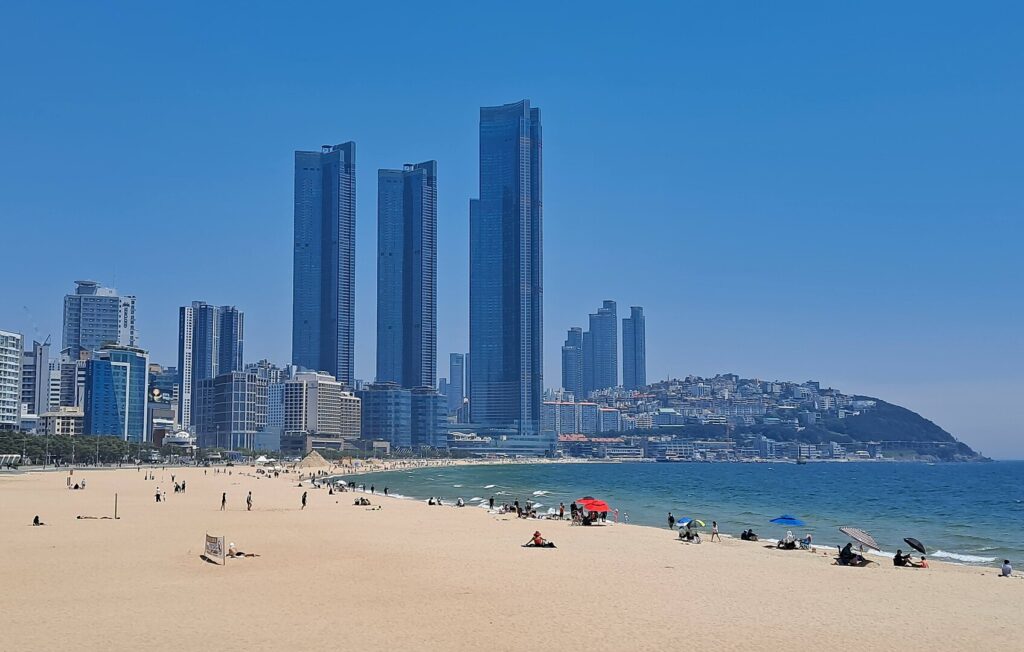
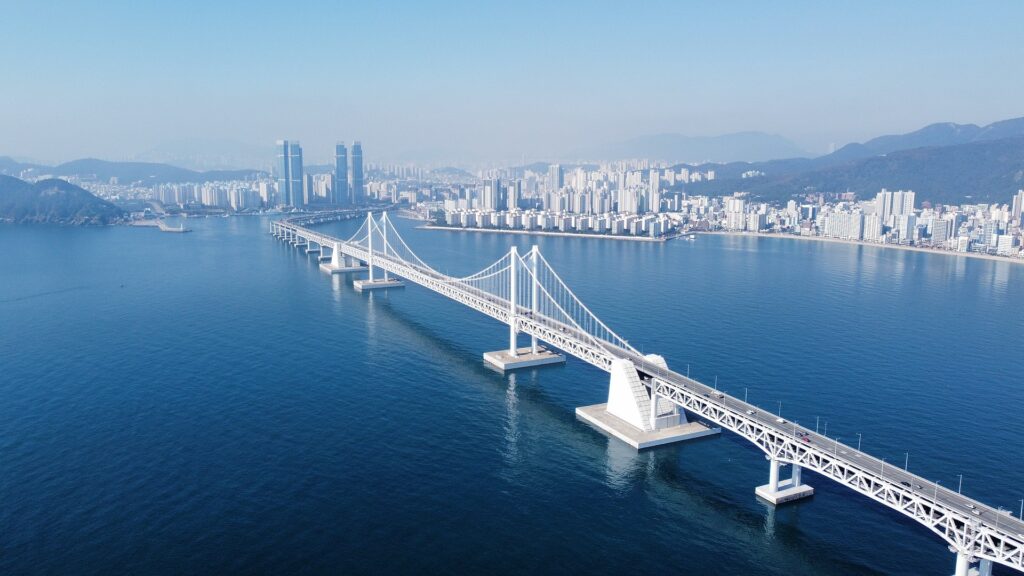
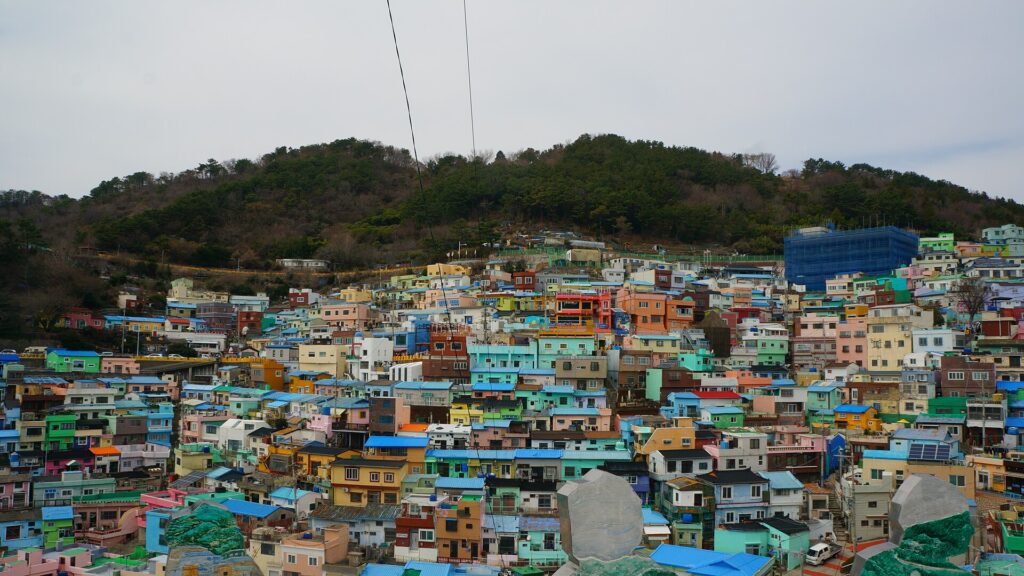
For those seeking culture along with coastal beauty, Gamcheon Culture Village should be your next stop. Known as “Machu Picchu of Busan,” this hillside village features colorful houses adorned with vibrant murals and quirky art installations around every corner. If you’re interested in local snacks during your beach visit, try odeng (fish cake skewers) from nearby stalls.
Indulge yourself in donuts as both are delicious reminders of Busan’s culinary skills. After spending time exploring these locations, I couldn’t help but marvel at how each place had something unique to offer. From breathtaking landscapes to lively cultural scenes, my trip was truly memorable!
Jeju Island Natural Wonders Awaits
Jeju Island dazzles with natural wonders. From pristine beaches to volcanic landscapes, it offers a treasure trove of delights. Hallasan Mountain stands majestic at 1,947 meters.
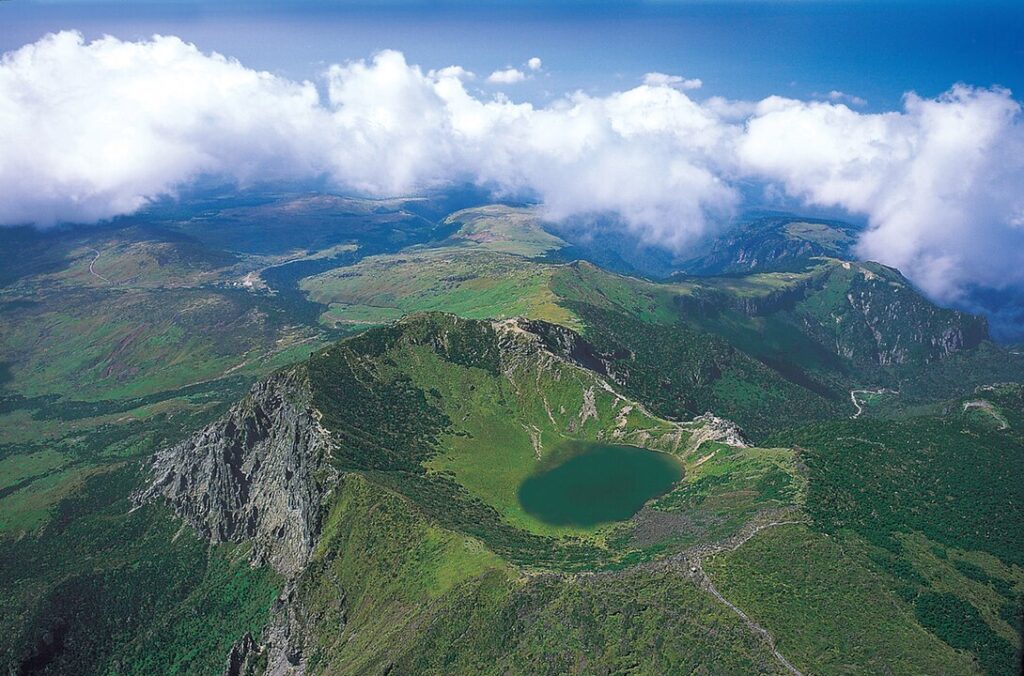

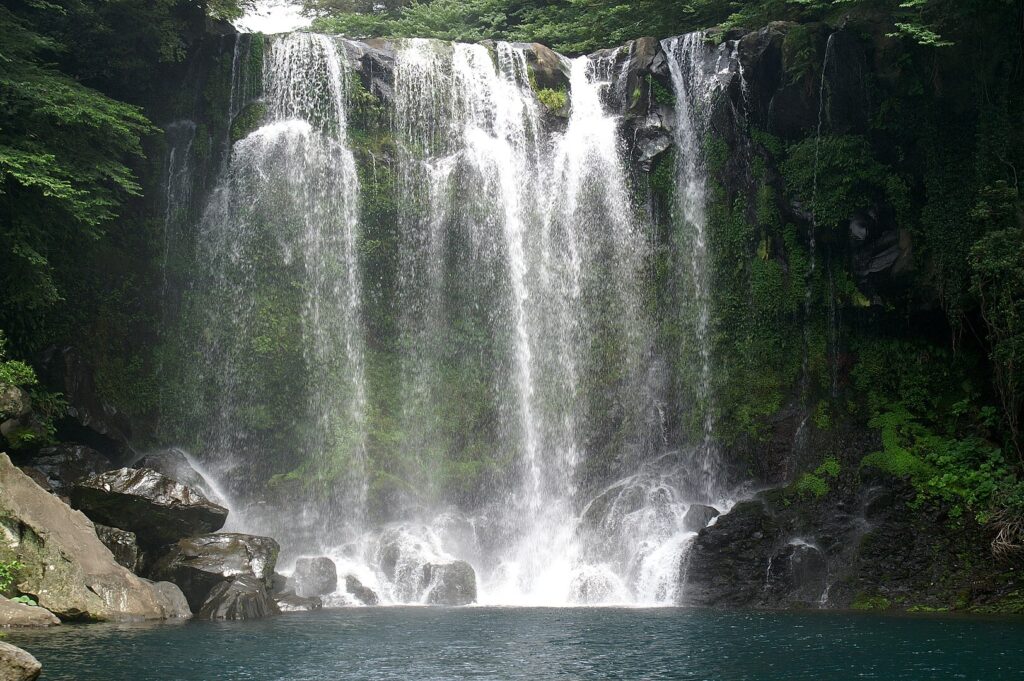
It’s South Korea’s highest peak and perfect for hiking enthusiasts like me. The trails range from easy walks to challenging climbs, offering breathtaking views along the way. Then there’s Seongsan Ilchulbong Peak or “Sunrise Peak.” This tuff cone crater formed over 5,000 years ago is a UNESCO World Heritage site.
I went early in the morning and was rewarded by an unforgettable sunrise view above the ocean horizon. Cheonjeyeon Waterfall is another must-see spot on Jeju Island’s western part in Jungmun Tourist Complex where I ventured next! Cheonjeyeon translates to “Pond of Heaven,” featuring three stunning cascades surrounded by lush forestation making up this hidden slice-of-paradise attracting avid photographers capturing every angle possible around its scenic framed landscape!
Manjanggul Cave boasts one of the world’s longest lava tubes, stretching more than thirteen kilometers. It reveals unique formations of stalactites and showcases geological marvels, captivating a broad audience.
Shop the Trendy Districts of Gangnam
Gangnam is a shopper’s paradise. Start your adventure at COEX Mall, one of Asia’s largest underground shopping malls. With over 300 stores, it offers everything from local brands to international luxury labels.



Next, head to Garosu-gil in Sinsa-dong known for its tree-lined streets and boutique shops. I love browsing through the unique fashion items here because you find things unavailable elsewhere in Seoul. For tech enthusiasts like myself, Yongsan Electronics Market is a must-visit spot though not exactly within Gangnam’s core but close enough and worthwhile for gadgets galore!
You can haggle prices on the latest electronics which adds fun to the experience. Street markets also thrive! Apgujeong Rodeo Street mixes high-end boutiques with trendy cafes perfect after tiring yourself out shopping or want some people-watching moments just sipping coffee outside makes all hustle worth!
If vintage treasures are more up your alley, visit Goto Mall beneath Express Bus Terminal Station. It’s full of eclectic finds, Korean-style home goods, and even makeup products aplenty.
Navigate South Korea’s Transport System Easily
Navigating South Korea’s transport system is straightforward with the right tools and tips. First, plan your route using apps like NAVER Map or Kakao Map. They can display instructions in English and Korean Romanization.


When you’re on the subway, pay attention to platform numbers, train directions, and transfer points. Always keep announcements in mind; they often include themed audio chimes for popular stops like seagulls near beaches or traditional drums at palaces. A T-Money card is essential for convenience across both buses and subways.
This rechargeable card saves time since it avoids buying separate tickets each journey—it even offers discounted fares! You should carry it somewhere handy so that scanning becomes effortless as most subway fares are calculated based on distance traveled. In Seoul specifically, a trip up to 10 kilometers costs about 1,350 KRW (roughly $1.20 USD).
Add just an extra 100 KRW every five kilometers until reaching around 2,650 KRW ($2.30 USD) max within city limits! Children, students, and seniors might qualify for discounts too—always ask if eligible alongside relevant documents required beforehand. Avoid peak hours between early morning and late evening schedules due to high crowd volumes congesting trains during those periods.
Experience Dynamic Cultural Festivals Year-Round
South Korea’s cultural festivals offer a captivating journey through tradition and modernity. I’ve experienced the joy of these events firsthand, each providing unique insights into Korean culture. Chuseok is like Thanksgiving in America but with deeper ancestral ties.
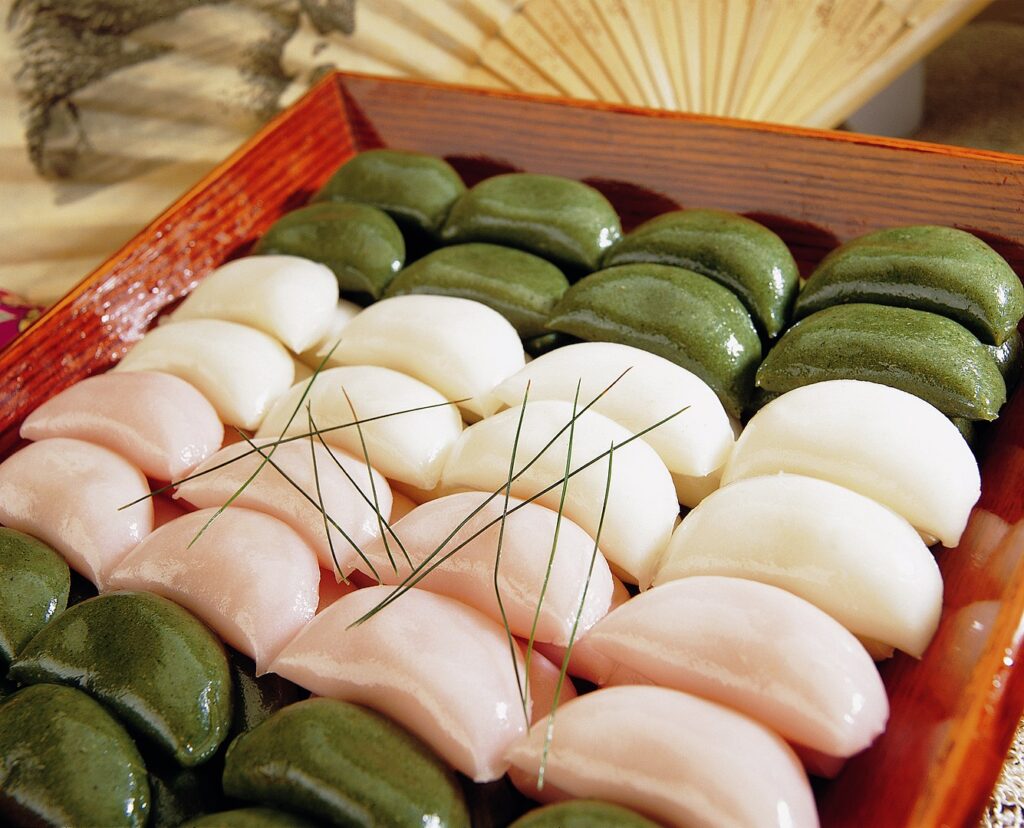


Families gather to honor their ancestors through Charye rituals and share meals loaded with traditional foods like songpyeon (half-moon rice cakes) and jeon (Korean pancakes). During this time, it felt heartwarming to see families traveling back home just to maintain traditions that have been passed down over generations. In contrast, Boryeong Mud Festival draws crowds for its lively atmosphere at Daecheon Beach every summer.
Activities range from mud wrestling to getting rejuvenating mud massages believed to benefit the skin due to mineral-rich properties. The energy is contagious; you can’t help but join in on the fun despite being completely covered in mud by day’s end! More contemporary events also make South Korea dynamic year-round.
Take the Seoul Lantern Festival held every November along Cheonggyecheon Stream as an example. Thousands of illuminated lanterns light up downtown Seoul, creating magical scenes that are both traditional and artistic.
Find Serenity in Temple Stays
In South Korea, experiencing a temple stay offers both cultural immersion and stress relief. During my own visit, I participated in Seon meditation sessions that brought immense tranquility. Early morning chanting services filled the air with rhythmic recitations of Buddhist scriptures, creating an atmosphere perfect for reflection.

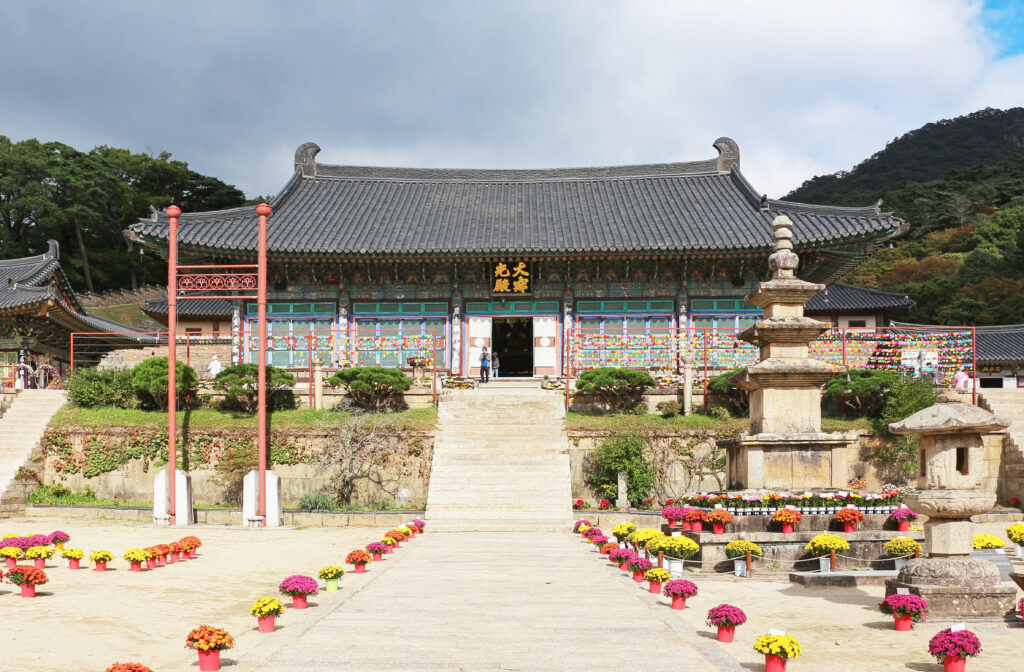
At Bongeunsa Temple in Seoul, amidst city hustle-bustle yet serene inside its grounds, daily routines became rituals that calmed the mind. The traditional meals known as balwoogongyang were conducted in silence which added to mindfulness and gratitude towards food. Exploration didn’t stop at architecture alone; understanding Korean Buddhism through direct interaction with monks provided deep spiritual insights.
Activities like tea ceremonies taught me appreciation for present moments while community tasks instilled teamwork spirit without uttering many words! Some days took us on tours around temples such as Haeinsa where historical contexts unfolded before our eyes alongside stunning natural sceneries especially found at Baekdamsa within Seoraksan National Park – truly enriching visually too apart from spiritually so! Keep it simple with comfortable, modest clothing suitable for indoors or outdoors.
Necessary toiletries suffice well enough, with no extra fuss required. Overall costs vary: 1-night ranges $45-$70 USD including everything typically needed. The experience is undeniably worth every penny, providing unforgettable memories cherished forever.
Exploring South Korea offers a rich tapestry of experiences. From Seoul’s bustling streets to Busan’s scenic coastlines, each city tells its own story. The blend of ancient temples and modern skyscrapers provides both history buffs and tech enthusiasts something to marvel at.
Local cuisine tantalizes the taste buds while unique shopping districts tempt even the thriftiest travelers. Efficient public transport ensures that navigating these urban landscapes is stress-free too. Dive into each city’s guide for an unforgettable journey through this vibrant country full of surprises and delights!
Discover a wealth of valuable travel articles by visiting our blog page, brimming with an abundance of tips, guides and inspiration for your upcoming adventures. Whether you’re in search of insider knowledge on unexplored destinations or seeking pocket-friendly advice to facilitate budget travel – we cater to every kind! Our wanderlust-inducing storytellers ensure that each journey is enthralling; curated collections take the reader on a voyage through hidden gems and invite them into their next unforgettable destination where they will be carried away by exploration.


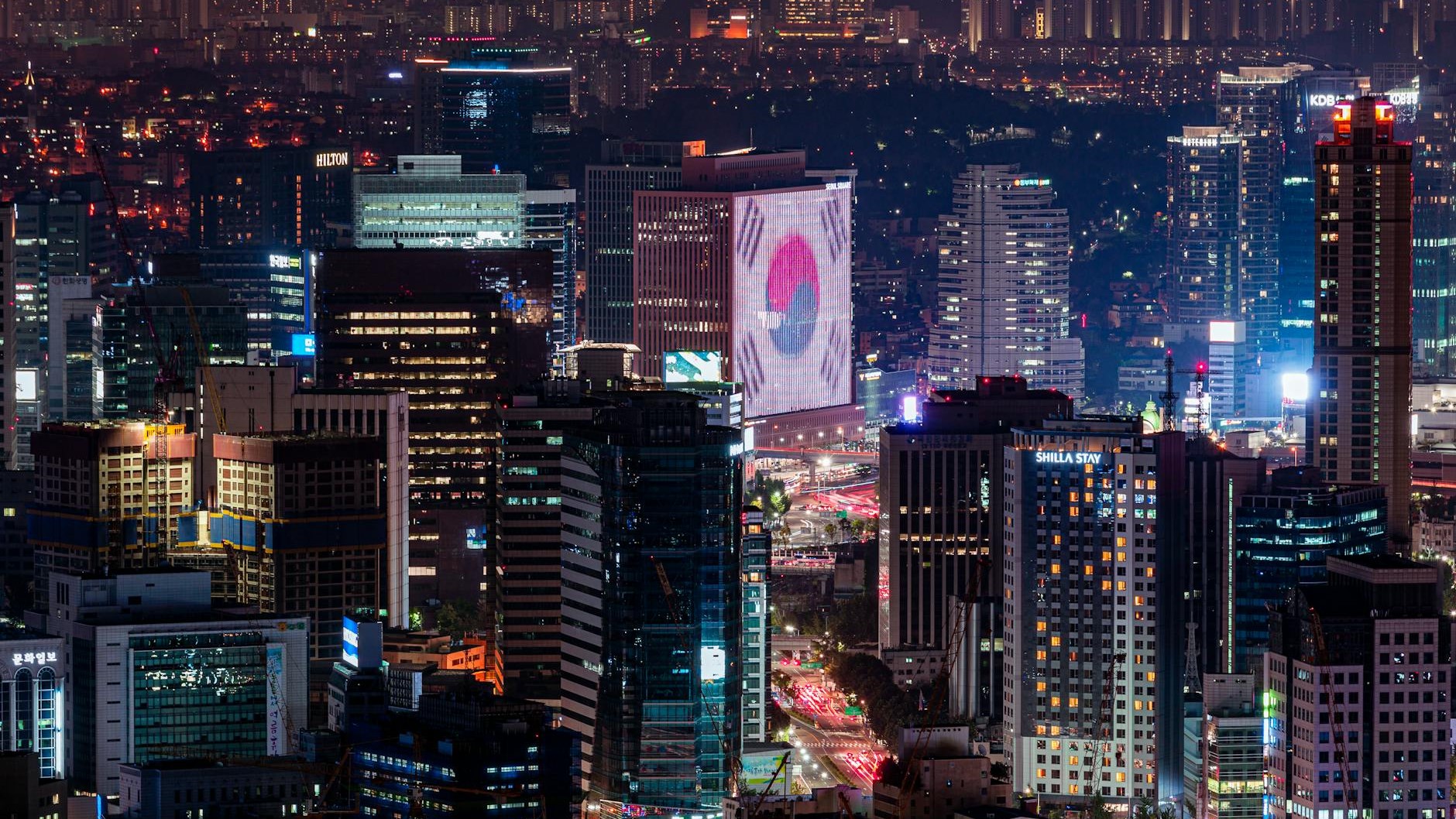


Leave a Reply